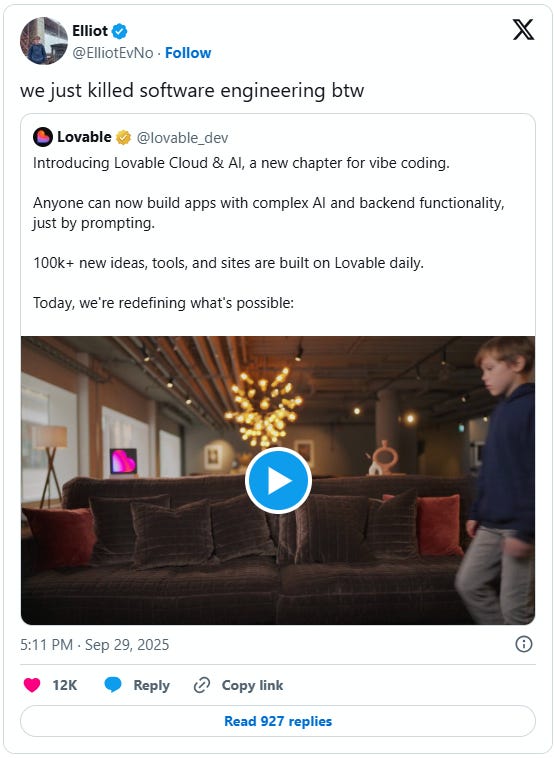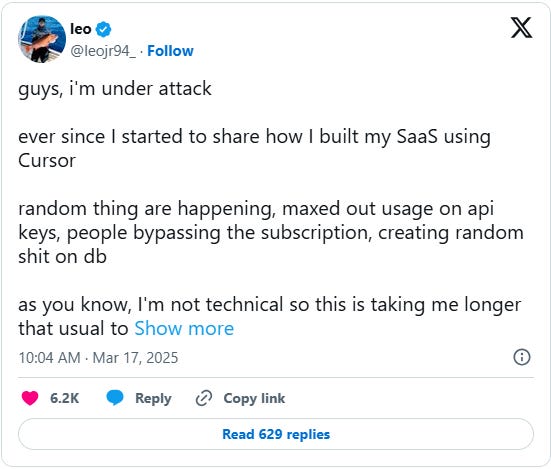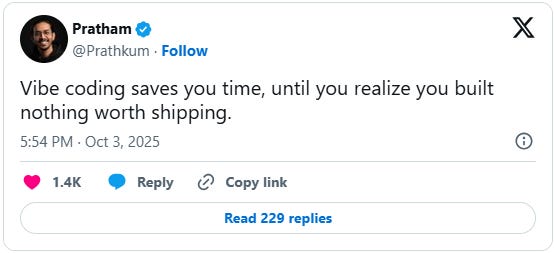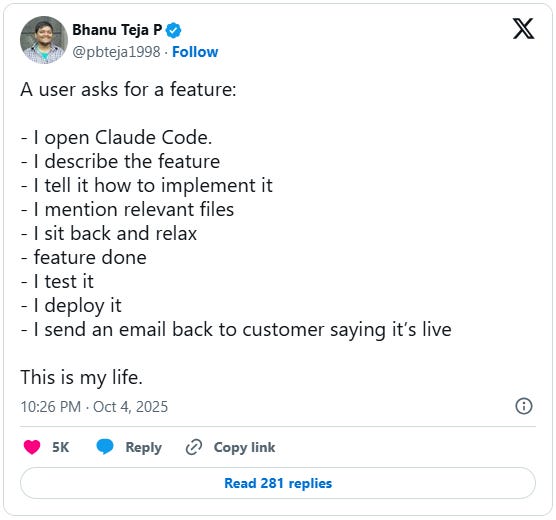How vibe coding is changing the software engineering landscape
Vibe-coding platforms are dishing out code faster than ever before. But software engineering is more than just prompting LLMs.
Lovable, the hot vibe-coding platform, recently released a video that shows their new AI platform enabling users to create and deploy apps with a single prompt. To show how intuitive the platform is, they had a ten-year-old kid run a prompt (which was kind of detailed and specific for a person who doesn’t know anything about coding) and Lovable create an entire app in a short span.
Lovable Cloud automatically created the frontend, backend, database, and deployed the application. “With Lovable Cloud, all of that happens automatically,” says one of the Lovable engineers in the video. “You don’t even have to know what a database is. It just works.”
This is great and I’m happy to see these vibe-coding platforms progress and add new features.
But then I saw this X post from one of the people on the Lovable team, which got a lot of traction. The quotes on the original Lovable post also had plenty of similar sentiments.
This I took issue with. Granted, the person who posted it was probably ragebaiting. But this is a recurring theme, where users show AI creating an entire application from a single prompt and decide that the entire field of software engineering is dead. We’ve seen this happen in other fields before, such as radiology.
Software engineering is not dead (and won’t be for a good while). It is just changing in scope and nature.
To be clear, I have nothing against vibe-coding. I’m all for it. In fact, the easier programming becomes, the more people will get to feel the magic of building their own applications and solve everyday problems with them.
There are plenty of examples online of people creating personal productivity tools, full games, browser extensions, etc. with single prompts.
However, it’s one thing to one-shot an application. It’s a totally different thing to ship an application, deal with scale, security, maintenance, and more. That is what software engineering is about. And vibe-coding alone will not handle that for you.
There are multiple reports and anecdotes of vibe-coded applications deployed publicly and turning into security disasters or failing to meet the complex needs of real software.
Many people who got into programming through vibe-coding are learning (sometimes the hard way) that to deploy a real application, you either need to have a resident programmer on your team or go out there and learn the core skills yourself.
At the same time, we’re seeing a completely different range of reactions from experienced software engineers.
On one end of the spectrum, we’re seeing developers fully reject vibe-coding as a passing fad, highlighting its failures, and stressing that if you don’t write your own code, you’re not a software engineer.
On the other end, some developers are fully embracing vibe-coding platforms and using them to write most of their code and gradually shifting to a role of reviewing and correcting code.






